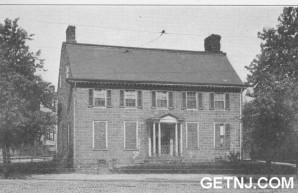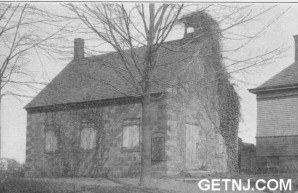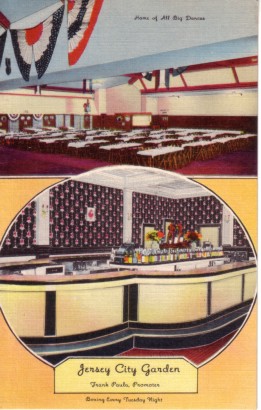 |  |  |
|
| ||
 |  |  |
 |  |  |
|
| ||
 |  |  |
|
|
From Historic Roadsides of New Jersey by The Society of Colonial Wars in the State of New Jersey, 1928
Edited by GET NJ, COPYRIGHT 2002
Essex County was formed in 1675. The boundaries were
first determined in 1709-10 and as then established included
what is today known as Union County.
The Protestant Episcopal Church in Newark originated
in 1734, being organized by some Episcopalians and dissatisfied
Presbyterians, one of whom Colonel Josiah Ogden had been
disciplined for saving his grain on a Sabbath in a wet harvest
season. As a result of this organization, Trinity Church was
established. The present church, standing in Military Park, is
built on the site of the original church and retains the original
tower.
Points of interest.
The land constituting Essex County was purchased from
the Indians by the settlers of the City of Newark for fifty
double hands of powder, 100 bars of lead, 20 axes, 20 coats,
10 guns, 20 pistols, 10 kettles, 10 swords, 4 blankets, 4 barrels
of beer, 10 pairs of breeches, 50 knives, 20 horses, 850 fathoms
of wampum, 6 anchors of liquor, and 3 troopers' coats.
BELLEVILLE
On the Passaic River, three miles north
of Newark. Founded prior to 1682 and once known as Second River. Scene of battle September 27, 1778.
BLOOMFIELD
Three and one-half miles from Newark.
During the Revolution, Bloomfield was the scene of acts of
violence and plunder on the part of the Tories. The Presbyterian Church in Bloomfield was erected in 1796. Corner of
Bloomfield and Liberty Streets. Memorial tablet to General
Joseph Bloomfield dedicated November 10, 1923, gift of Major
Joseph Bloomfield Chapter, D.A.R.
CALDWELL
The town of Caldwell is notable as birthplace of Grover Cleveland, twice President.
NEWARK
Settled May, 1666 by settlers from Guilford,
Branford, and Milford, Connecticut. Named Newark in
honor of the Reverend Abraham Pierson, Pastor of the settlers
who came from Newark, England.
Barbour and Howe state the purchase price of the original
township of Newark as 130 pounds New England currency,
12 Indian blankets, and 12 Indian guns.
By agreement no one could become a Freeman or Burgess
of Branford (the name originally selected for Newark) except
such as were members of some Congregational Church. In the
first distribution of land, six acres were given to each settler as
a homestead. In planning the town, the Upper Green, now
Washington Square, was reserved as a market place, the Lower
Green for a military parade ground, now Military Park.

Here Rev. Hannibal Goodwin Invented Photographic Films

First School House Erected in Newark
The people of Newark May 18, 1775, agreed not to export
to Quebec, Nova Scotia, etc., or to furnish provisions to the
King's ships or boats. In the Winter of 1778, a detachment
of the second battalion of the Continental Army was stationed
at Newark. An engagement took place here January 25, 1778.
The first church erected in Newark, that of the Rev. Mr.
Pierson, built in 1668, on a lot opposite to the present Presbyterian Church.
The first Presbyterian Church had, as its pastor about
1736, the Rev. Aaron Burr, father of Aaron Burr, Vice President of the United States, born at Newark September 24, 1757.
The College of New Jersey, now Princeton University,
was located in Newark from 1747 to 1756, Rev. Aaron Burr
being President from 1748 to 1757.
Notable places:
ORANGE
Three and one-half miles northwest of Newark. Founded about 1720.
MONTCLAIR
Old Crane Homestead, Washington's
Headquarters October 26, 27, 1780. Marked by tablet erected
by Eagle Rock Chapter, D.A.R.
|
The Historic Roadsides in New Jersey Table of Contents |
|


|
UrbanTimes.com |